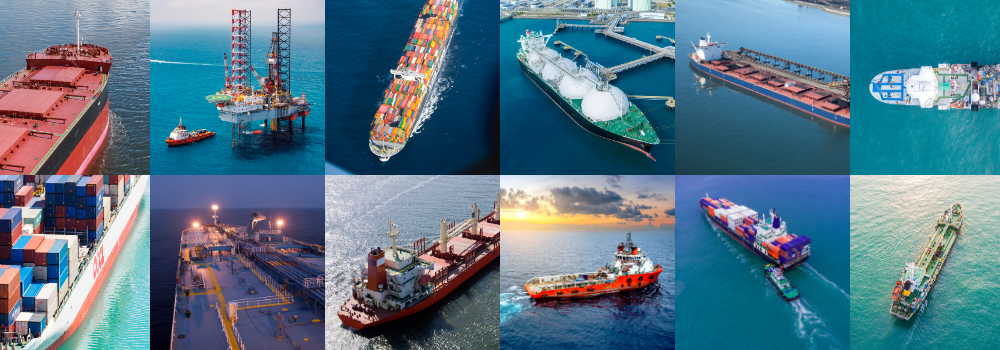Types of Vessel Abbreviations
ATS – Salvage Tug
AHTS – Anchor Handling Tug Supply Vessels
AHTV – Anchor Handling Tug Vessel
AT – Ocean Tug
ATA – Auxiliary Ocean Tug
ATR – Rescue Tug
AK – Cargo Ship
AO – Oiler or Fuel Oil Tanker
AOG – Gasoline Tanker
BAK – British Cargo Ship
Bg – Barge
CS- Cable Ship
dd – Dry dock
FPSO – Floating Production Storage and Offloading
FSO – Floating Storage and Offloading Unit
FSRU – Floating Storage Regasification Unit
GTS – Gas Turbine Ship
HLV – Heavy Lift Vessels
LNG – Liquefied Natural Gas
LPG – Liquefied Petroleum Gas
LGC – Liquefied Gas Carriers
Lo-Lo – Lift on Load off
LAS – Lighter Aboard Ship Vessels
MT – Motor Tanker
MV- Motor Vessel
OSV – Offshore Vessel
PSV – Platform Supply Vessel
Ro-Ro – Roll-on Roll-off
ROV – Remotely Operated Vehicles
RRFV – Ready Reserve Force Vessel
ULCC – Ultra Large Crude Carriers
ULOC – Ultra Large Ore Carrier
VLCC – Very Large Crude Carriers
VLOC – Very Large Ore Carrier
VLBC – Very Large Bulk Carrier
YT – Harbour Tug
YTB – Large Harbour Tug
YTL – Small Harbour Tug
YTM – Medium Harbour Tug
YCD – Fuelling Barge
Dry Bulk Vessels
Dry bulk carriers are designed to transport non-liquid bulk cargo. They are responsible for transporting raw materials around the world. They have open cargo holds and are usually equipped with specialist cargo handling equipment.
Tanker Vessels
Tanker ships are designed to transport liquid cargo. They have multiple compartments to carry different liquids simultaneously and are constructed so they don’t cross-contaminate. They are responsible for delivering necessary supplies of essential products globally including oil and chemicals.
Container Vessels
Container ships are designed to transport standardised cargo containers. The containers are stacked onto the ships and carried to ports worldwide. These ships are categorised by their capacity which can range up to 20,000 TEUs (twenty-foot equivalent units). These ships have revolutionised the way goods are transported by sea and are easily transported to trucks or trains.
Breakbulk Vessels
Breakbulk vessels are vessels in which transport cargo or goods that cannot fit inside regular cargo bins. They are usually transported in bags, boxes, crates, barrels or palettes. These vessels are usually Ro-Ro vessels or Lo-Lo vessels.
Heavy Life/Project Cargo Vessels
Heavy Life vessels transport goods or equipment that are tedious to break down or are oversized. The vessels are equipped with the cranes and necessary equipment to load and unload these goods. Best vessels to transport these goods are Multi-Purpose or Heavy-Life vessels.
Offshore Vessels
Offshore vessels are specifically designed for serving operational purposes such as oil exploration and construction. These vessels can also provide necessary supplies to the evacuation and construction units that are located at sea as well as the movement of crewing personnel to and from the operational areas.

